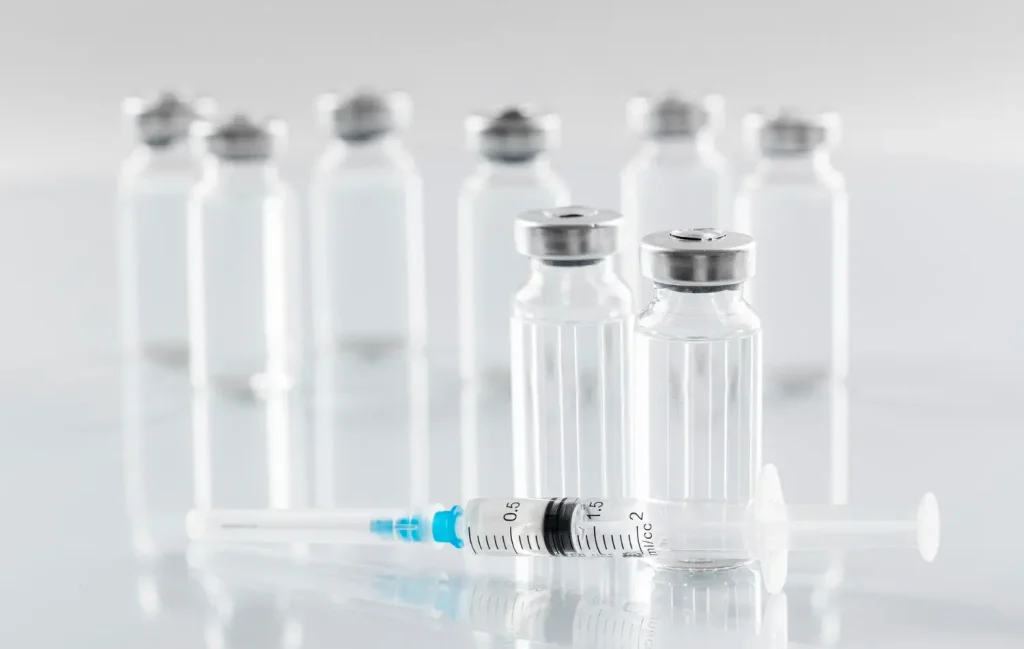Achieving natural-looking results with Dysport hinges on precise injection technique and the correct dosage. A recent study published in the Journal of Dermatological Surgery found that slight variations in Dysport dosage could significantly impact wrinkle reduction and the risk of side effects.
Dysport, an injectable neuromodulator, temporarily relaxes muscles that contribute to wrinkles. Unlike dermal fillers that add volume, Dysport smooths out lines formed by repeated facial expressions like frowning or squinting. However, the optimal dosage for each individual depends on various factors, including the severity of wrinkles, the area treated, and muscle strength.
In this article, we will delve into the world of Dysport dosage. We’ll explore how doctors determine the appropriate amount for each patient, the factors influencing dosage decisions, and the importance of individualized treatment plans.
Key Takeaways
- Dysport dosage determination considers patient age, gender, muscle strength, activity, treatment goals, and desired outcomes to tailor treatment for optimal results.
- Recommended initial dosage for conditions like cervical dystonia typically starts at 500 Units of Dysport, with adjustments based on individual factors and response to treatment.
- Injection techniques focus on precision to ensure safe and effective administration, with careful consideration of dosage and site placement to avoid complications.
- Dosage adjustment strategies involve starting with a low dose, monitoring patient response, and making necessary changes based on muscle size, condition severity, and treatment goals.
- Evidence-based guidelines and research support specific dosage recommendations, guiding medical professionals in achieving safe and effective outcomes.
- Optimizing Dysport dosage is essential for achieving safe and effective results, with careful consideration of individual patient characteristics and treatment goals.
About: Medical Spa RX provides medical practices with premium products at the best prices. If you’re looking to buy Dysport wholesale for your practice, the sales representatives at Medical Spa RX can give you guidance.
Factors Influencing Dysport Dosage Determination

This article delves into the various elements that play a crucial role in determining the appropriate dosage of Dysport. It highlights critical considerations such as patient demographics, muscle characteristics, and treatment objectives, offering insights into optimizing dosage for safe and effective results.
- Patient Age and Gender: Age and gender significantly impact how much Dysport is needed. This fact helps doctors decide the right amount for each person. Young or old, male or female, each patient requires a unique approach to get the best results.
- Muscle Strength and Activity: Assessing muscle strength and activity is crucial. This step helps decide the correct dose of Dysport. Stronger muscles or those used more often might need more Dysport to see results.
- Treatment Goals and Desired Outcomes: Doctors aim to find the correct dose of Dysport for safe and sound outcomes in treating upper limb spasticity in stroke patients. The main goal is to manage muscle tightness effectively, helping patients move better and feel more comfortable.
Dosing Guidelines for Dysport Injections

Finding the correct Dysport dose is critical to getting good results, as it ensures optimal muscle relaxation and desired aesthetic outcomes. Doctors consider factors like age, muscle activity, and patient goals to tailor the starting dose for each individual, optimizing treatment effectiveness and safety.
Recommended Initial Dosage
For cervical dystonia, the starting point is usually 500 Units of Dysport. This dose is divided into a shot straight into the muscle. Each person might need a different amount depending on several factors, such as how big or strong their muscles are, how many muscles need treatment, and how severe their condition is.
Doctors should stay within the suggested injection dosage and frequency for Dysport, as exceeding recommended limits can increase the risk of adverse effects and compromise treatment outcomes. Adhering to established guidelines ensures that Dysport treatments remain safe and effective for all patients, minimizing potential complications.
Injection Techniques for Optimal Results
Precision is critical to ensuring the best outcomes with Dysport injections; therefore, doctors must use no more than 1 mL at each site and carefully place Dysport into the right muscle area to avoid complications and achieve optimal results.
Doctors follow guidelines for safe, effective shots. For instance, they must ensure only a little goes in one spot. By doing this, patients see the changes they hope for without bad reactions or misplaced injections leading to issues.
Strategies for Adjusting Dosage Based on Individual Patient Responses
Adjusting the dosage of Dysport injections is critical for patient safety and effectiveness. Start with a low dose for new patients and watch how they respond. Then, change the dose based on muscle size, number, location, and condition severity.
For follow-up treatments, consider the patient’s feedback and any changes in their condition or muscle activity. This approach helps balance too little and too much Dysport, reducing risks while aiming for the best results.
Recommendations for Optimizing Dysport Dosage

By adhering to evidence-based guidelines and adjusting doses based on individual patient responses, healthcare providers can optimize outcomes and minimize risks associated with Dysport injections.
Research and Studies Supporting Specific Dosage Recommendations
Doctors and health experts research the best doses of Dysport and review studies to ensure its safety and effectiveness. One study showed that a certain amount of Dysport can help relax muscles after a stroke.
Best Practices for Achieving Safe and Effective Outcomes
Research and studies lay the groundwork for safe Dysport use, leading us straight into knowing how to apply these findings. For medical professionals aiming for top results, it’s all about sticking closely to evidence-based guidelines.
Using botulinum toxin injections correctly means learning from each treatment. Start with recommended doses, then adjust as you see how a patient responds. Monitor muscle activity and strength over time.
This method lets you tailor therapy to fit each person perfectly, avoiding common mistakes. To give your patients the best care, always stay updated with medical guidelines and clinical trial information.
Addressing Common Dosing Misconceptions and Pitfalls
More Dysport means better results, but this is not true. Too much can cause unwanted effects, like muscle weakness or drooping skin. Sticking with FDA-approved ranges is critical to ensuring each patient’s safe and effective doses.
Using Dysport while breastfeeding is generally not recommended and doctors who choose to go through with this procedure must be equipped with care and knowledge, especially since everyone’s body reacts differently. Evidence shows sticking within recommended limits offers good outcomes without extra risks.
Even though it might be tempting, going beyond 1500U for upper limb spasticity could be studied better and could be unsafe. Correct placement matters as much as how much you use—aiming for precision ensures treatment success without overdoing it.
Conclusion
Getting the proper Dysport dosage brings safe and effective results. Every patient is unique, so their treatment must be, too. Doctors follow strict guidelines but adjust for each person’s body and goals. This personalized approach ensures patients receive the most suitable dosage for their needs and desired outcomes.
This careful balance ensures everyone can safely see benefits, and optimizing doses is critical for good outcomes in Dysport’s cosmetic and medical uses. Healthcare providers must prioritize patient safety while tailoring treatment plans to achieve optimal results, whether for cosmetic enhancements or medical conditions like upper limb spasticity.
FAQs
1. How much Dysport should I use for the first time?
Start with a low dose, as your doctor suggests.
2. Can I increase my Dysport dosage if I don’t see results?
Yes, but only do this after talking to your doctor.
3. How often can I get Dysport injections?
Usually, follow your doctor’s advice every 3-4 months.
4. Can I have a maximum amount of Dysport at once?
There is a limit to staying safe; ask your doctor what that is for you.
5. Will using more Dysport give me better results?
Only sometimes; using too much can cause problems, so stick to the recommended dose.
References
Francisco, G. E., Balbert, A., Bavikatte, G., Bensmail, D., Carda, S., Deltombe, T., Draulans, N., Escaldi, S., Gross, R., Jacinto, J., Ketchum, N., Molteni, F., Moraleda, S., ODell, M. W., Reebye, R., Säterö, P., Verduzco-Gutierrez, M., Walker, H., & Wissel, J. (2021). A practical guide to optimizing the benefits of post-stroke spasticity interventions with botulinum toxin A: An international group consensus. Journal of Rehabilitation Medicine, 53(1), jrm00134. https://doi.org/10.2340/16501977-2753
Bakheit, A. M., Thilmann, A. F., Ward, A. B., Poewe, W., Wissel, J., Muller, J., Benecke, R., Collin, C., Muller, F., Ward, C. D., & Neumann, C. (2000). A randomized, double-blind, placebo-controlled, dose-ranging study to compare the efficacy and safety of three doses of botulinum toxin type A (Dysport) with placebo in upper limb spasticity after stroke. Stroke, 31(10), 2402–2406. https://doi.org/10.1161/01.str.31.10.2402





















